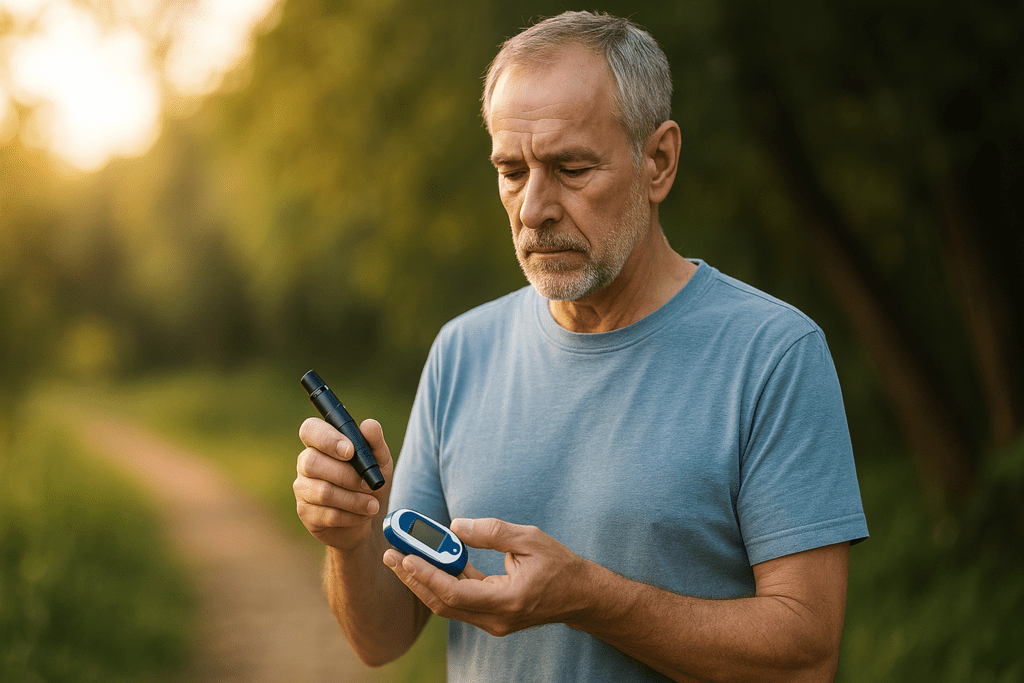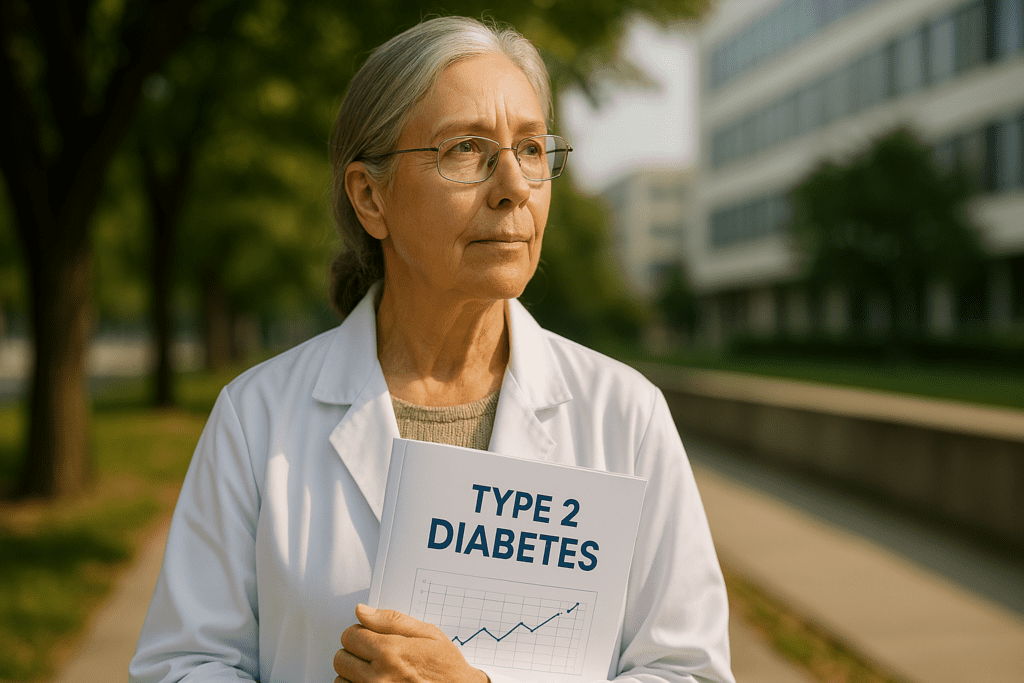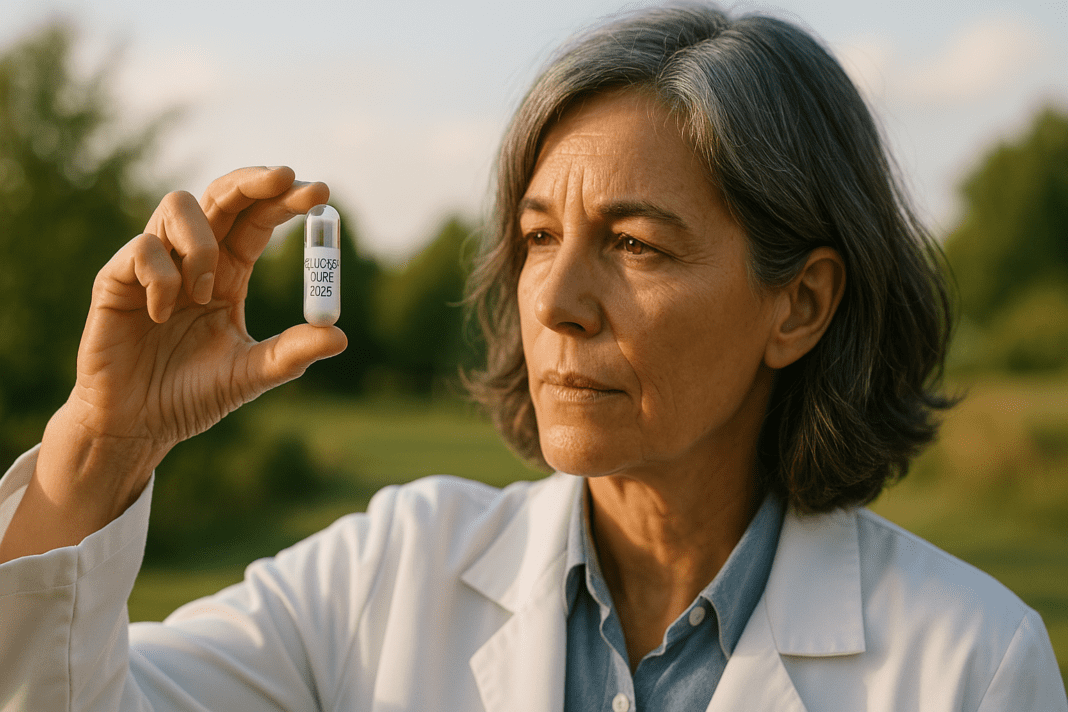A Turning Point in Diabetes Research: The 2025 Landscape
Type 2 diabetes has long been one of the most challenging chronic conditions to manage, not only because of its widespread prevalence but due to the complex interplay of genetic, metabolic, and lifestyle factors that drive its development. As of 2025, however, the scientific community is at an inflection point. Groundbreaking research is redefining how we understand this condition, and more importantly, how we might cure it. Recent studies, technological innovations, and therapeutic breakthroughs have sparked renewed optimism, prompting a surge in discourse around the question: will diabetes be cured in the next ten years? This article explores the most promising developments to date and what leading experts believe the future holds.
You may also like: Breakthroughs in Current Diabetes Research: What the Latest Studies Reveal About Treatment and Prevention
What Makes Type 2 Diabetes So Hard to Cure?
To appreciate the recent progress, it’s crucial to first understand why type 2 diabetes has remained such a persistent clinical challenge. Unlike type 1 diabetes, which is an autoimmune condition, type 2 diabetes is often tied to insulin resistance — a condition where the body’s cells fail to respond properly to insulin. Over time, this resistance leads to elevated blood glucose levels, placing a continual burden on the pancreas and other metabolic systems.
The multifactorial nature of type 2 diabetes means that no single treatment addresses all the underlying causes. Genetic predispositions, sedentary lifestyles, obesity, and dietary patterns contribute to disease onset and progression. For decades, the approach has been focused primarily on symptom management through medications like metformin, GLP-1 receptor agonists, and insulin therapy. Yet, none of these address the root cause, hence the elusive nature of a true cure.

The Role of Metabolic Surgery and Remission Milestones
One of the first major shifts in the narrative surrounding type 2 diabetes cure prospects came from research into bariatric and metabolic surgery. Studies over the last decade have shown that patients undergoing procedures such as gastric bypass or sleeve gastrectomy often experience rapid improvements in insulin sensitivity and, in many cases, complete remission of diabetes.
In 2025, these findings continue to be refined and extended. Current data reveals that up to 80% of patients achieve sustained remission following surgery, especially when performed early in the disease course. Experts are quick to point out, however, that while these outcomes are remarkable, they do not constitute a “cure” in the traditional sense. Remission is contingent upon continued weight management and lifestyle changes. Nevertheless, these interventions highlight the possibility that type 2 diabetes can be reversed under certain conditions — a revelation that has fueled optimism in the field.
Cell-Based Therapies: The Frontier of Regenerative Medicine
Perhaps the most exciting area of research in 2025 lies within the realm of regenerative medicine. Scientists are exploring how stem cells and pancreatic islet cell transplants could be used to restore insulin-producing beta cells. While these approaches were once exclusive to type 1 diabetes investigations, new findings suggest they may hold promise for individuals with advanced type 2 diabetes who have lost significant beta cell function.
Recent breakthroughs in induced pluripotent stem cell (iPSC) technology have enabled researchers to create beta cells from the patient’s own cells, reducing the risk of immune rejection. Trials currently underway in the U.S., Europe, and Japan are testing the safety and efficacy of these therapies. If successful, they could form the basis of a long-term or even permanent treatment option. Although the phrase type 2 diabetes cure 2025 may still be premature in this context, regenerative strategies have added a new dimension to the timeline and plausibility of achieving it within the next decade.
The Gut Microbiome: A Hidden Key to Glucose Regulation
Another intriguing development involves the role of the gut microbiome in metabolic health. The ecosystem of trillions of microorganisms residing in the human gastrointestinal tract has been shown to influence everything from immunity to mood — and now, blood sugar regulation.
In recent years, studies have revealed that individuals with type 2 diabetes exhibit markedly different gut microbiome profiles compared to those without the disease. Specific bacterial strains have been associated with improved insulin sensitivity and reduced inflammation. Clinical trials in 2025 are focusing on fecal microbiota transplants (FMT) and custom probiotic therapies aimed at rebalancing the gut flora to favor glucose control.
Although the data is still emerging, early results are promising. Researchers speculate that modulation of the microbiome could become a central pillar in efforts to reverse or potentially eliminate type 2 diabetes in select patient populations. As scientists continue to explore the interaction between gut health and systemic metabolism, the idea that we might inch closer to a type 2 diabetes cure 2025 is gaining credibility.
Genetic Engineering and CRISPR: Editing the Diabetes Blueprint
Gene-editing technologies like CRISPR-Cas9 have revolutionized biomedical research, opening doors that once seemed firmly shut. In the context of type 2 diabetes, CRISPR is being used to investigate the correction of specific genetic mutations that predispose individuals to insulin resistance, obesity, and other metabolic dysfunctions.
In 2025, there are multiple preclinical studies exploring how gene editing might be applied to modulate genes such as PPARG, TCF7L2, and FTO — all of which have been linked to increased diabetes risk. Researchers are also investigating the potential of using CRISPR to modify genes that regulate inflammation and adipogenesis, with the aim of improving insulin sensitivity from the genetic level.
While we are still years away from clinical application, these studies are laying the groundwork for future interventions. If successful, they could provide targeted treatments that prevent the onset of diabetes in high-risk populations, effectively serving as a form of “cure by prevention.” This possibility brings us back to the central question: will diabetes be cured in the next ten years? The answer may depend as much on ethical, regulatory, and accessibility factors as on scientific breakthroughs.
Artificial Intelligence and Personalized Medicine
The use of artificial intelligence (AI) in diabetes care is expanding rapidly. In 2025, AI-driven platforms are being used to predict individual responses to various interventions, from dietary changes to medication regimens. These systems analyze vast amounts of data — including genetic markers, lifestyle metrics, and continuous glucose monitoring — to recommend personalized treatment plans.
This shift toward personalization is critical in a condition as heterogeneous as type 2 diabetes. No two cases are identical, and a one-size-fits-all approach is increasingly viewed as outdated. AI helps clinicians tailor interventions with a level of precision that was previously impossible. Moreover, AI algorithms are now playing a role in drug discovery, accelerating the identification of novel compounds that might address underlying disease mechanisms.
These innovations suggest that even if a singular type 2 diabetes cure 2025 is not achieved, the combination of personalized, predictive, and preventive strategies could amount to a functional cure for many individuals by the end of the decade.

Nutritional Therapies: Redefining the Role of Food as Medicine
While high-tech approaches often dominate headlines, dietary intervention remains a cornerstone of type 2 diabetes management. In 2025, the understanding of how food affects metabolic health has become increasingly nuanced. Nutritional scientists are now looking beyond calorie counts and glycemic indices to explore how macronutrient ratios, meal timing, and food-based bioactives influence insulin sensitivity.
One of the most studied diets continues to be the ketogenic diet, which has shown promise in promoting diabetes remission through significant reductions in carbohydrate intake. Time-restricted eating and intermittent fasting are also gaining traction, supported by clinical trials indicating improvements in glucose regulation and weight control. Nutrigenomics — the study of how genes and nutrients interact — is helping personalize dietary recommendations in a way that optimizes metabolic outcomes.
Experts emphasize that while no single diet constitutes a cure, sustained dietary changes can lead to remission in a significant subset of patients. These results have reignited public interest in food-as-medicine models and may play a key role in answering the question: will diabetes be cured in the next ten years?
Digital Therapeutics and Behavioral Science
Digital therapeutics, defined as evidence-based interventions delivered via software to prevent or treat disease, are becoming increasingly sophisticated. In type 2 diabetes, these tools are being used to support behavior change — often the most difficult aspect of disease management. Apps now offer real-time coaching, emotional support, and interactive goal tracking, all backed by cognitive-behavioral science.
One example is the emergence of FDA-cleared platforms that use machine learning to analyze behavior patterns and predict lapses in adherence. These insights enable timely interventions that prevent glycemic excursions. Importantly, digital therapeutics are democratizing access to high-quality care, especially in under-resourced settings where endocrinology specialists may not be available.
By addressing the behavioral and psychological dimensions of diabetes, these tools complement biological interventions, helping create a holistic framework for remission and potential cure. While not a standalone solution, they represent an indispensable component of the multifaceted strategy required to bring the world closer to a type 2 diabetes cure.
Pharmaceutical Innovations and Emerging Drug Classes
The pharmaceutical landscape for type 2 diabetes is evolving rapidly. In 2025, new classes of medications are being developed that go beyond glucose lowering. For instance, dual and triple agonists targeting GLP-1, GIP, and glucagon receptors are demonstrating profound effects on weight loss, insulin sensitivity, and cardiovascular outcomes.
Another promising category includes small molecules that enhance mitochondrial function, improve lipid metabolism, or inhibit specific enzymes like DPP-4 or SGLT2 with enhanced specificity and fewer side effects. Scientists are also exploring therapies that mimic the effects of exercise at the molecular level — known as “exercise mimetics” — which may be especially beneficial for patients with mobility limitations.
These drugs, when used in combination with lifestyle modification and digital support, could push more patients into long-term remission. While none may represent a definitive type 2 diabetes cure 2025, their cumulative impact could mark the beginning of a sustained decline in disease prevalence over the next ten years.
Barriers to a Cure: Access, Equity, and Cost
Despite the optimism surrounding these advances, significant barriers remain. Many of the most promising interventions — from stem cell therapy to AI-enabled platforms — are still expensive and not widely accessible. Health disparities continue to disproportionately affect marginalized communities, who are often at higher risk of developing type 2 diabetes and face systemic obstacles to receiving adequate care.
Ensuring that any future cure or remission protocol is equitable will require a concerted effort among policymakers, healthcare providers, and global health organizations. Affordability, insurance coverage, and culturally appropriate care models must be part of the conversation. Otherwise, the benefits of these scientific breakthroughs may be confined to a privileged few.
Experts caution that without addressing these social determinants of health, even the most advanced therapies may fail to achieve widespread impact. Therefore, when we ask will diabetes be cured in the next ten years?, we must also ask: for whom will it be cured, and under what conditions?

Frequently Asked Questions: Breakthroughs and Future Outlook for Type 2 Diabetes
1. What’s the difference between a functional cure and a permanent cure for type 2 diabetes?
A functional cure for type 2 diabetes refers to a state where a patient maintains normal blood glucose levels without the need for medication, though the underlying risk factors may still exist. In contrast, a permanent cure would involve fully reversing the condition at a biological level, such that it cannot recur even without lifestyle interventions. As of 2025, the distinction is crucial in evaluating emerging therapies. Many interventions being explored as part of the type 2 diabetes cure 2025 landscape, such as cell-based therapies and bariatric surgery, lean toward functional remission rather than biological eradication. Whether diabetes will be cured in the next ten years depends in part on how we define the word “cure” in clinical practice.
2. How close are we to making stem cell therapies a standard treatment for type 2 diabetes?
Stem cell therapy for type 2 diabetes is advancing rapidly, but it’s not yet widely available outside of research settings. Current trials are exploring how to regenerate insulin-producing beta cells, with some early successes in restoring partial pancreatic function. One of the greatest challenges is ensuring long-term viability and immune tolerance of transplanted cells. The vision behind a type 2 diabetes cure 2025 through stem cells is compelling, but issues of cost, regulatory approval, and patient matching still need to be addressed. Whether diabetes will be cured in the next ten years through stem cell interventions may hinge on advances in encapsulation technologies and personalized cell sourcing.
3. Could continuous glucose monitoring play a role in reversing type 2 diabetes?
Continuous glucose monitoring (CGM) is not only a management tool—it’s becoming an educational and behavioral aid that empowers patients to make better real-time decisions. When people see how specific foods and activities influence their blood sugar, they often make lasting changes. Over time, CGM can help reverse insulin resistance by facilitating weight loss and stabilizing glucose variability. While not a cure in itself, CGM technology is part of the broader toolkit contributing to the progress toward a type 2 diabetes cure 2025. If widely adopted and made affordable, CGM could accelerate remission outcomes and influence whether diabetes will be cured in the next ten years for a broader population.
4. How might environmental factors affect progress toward curing type 2 diabetes?
Environmental exposures, such as air pollution, endocrine-disrupting chemicals, and food additives, are increasingly linked to metabolic disorders. These external influences can impair insulin sensitivity and disrupt the microbiome, potentially undermining therapeutic efforts. Therefore, any serious push toward a type 2 diabetes cure 2025 must also consider public health and environmental reform. Community-level interventions to promote clean air, healthier food systems, and reduced exposure to obesogens may be just as critical as medical innovation. This adds complexity to the question of whether diabetes will be cured in the next ten years, as it highlights the interplay between biology and environment.
5. What role does mental health play in curing or reversing type 2 diabetes?
Psychological factors like chronic stress, depression, and anxiety are now recognized as major barriers to diabetes remission. Elevated cortisol levels interfere with glucose metabolism, while emotional distress can lead to disordered eating and medication non-adherence. Integrating mental health care into diabetes treatment is increasingly seen as essential. Innovations in digital mental health platforms, mindfulness-based programs, and trauma-informed care models may influence the trajectory of the type 2 diabetes cure 2025 movement. Addressing mental well-being could be a decisive factor in whether diabetes will be cured in the next ten years, particularly for populations that face high psychosocial burdens.
6. Are any countries leading the way in implementing experimental diabetes cures?
Several countries are pioneering advanced clinical trials and experimental interventions. For instance, Japan has been at the forefront of beta-cell regenerative therapies, while the U.S. and Canada are advancing AI-driven drug discovery and personalized care platforms. Meanwhile, Scandinavian nations are integrating population-wide digital health systems that track metabolic data to optimize early intervention. These international efforts contribute to a growing body of global evidence supporting the feasibility of a type 2 diabetes cure 2025. Looking globally helps us assess whether diabetes will be cured in the next ten years—not just in theory, but in diverse real-world settings.
7. How are employers and insurers responding to the prospect of a cure?
Forward-thinking employers and insurers are beginning to view type 2 diabetes remission as a financially and ethically sound investment. Some companies are covering intensive lifestyle interventions and digital therapeutics that go beyond traditional treatment. Others are experimenting with outcomes-based reimbursement models, where providers are rewarded for helping patients achieve remission. If scaled, these efforts could align economic incentives with the goal of realizing a type 2 diabetes cure 2025. Broader systemic adoption could dramatically affect whether diabetes will be cured in the next ten years, at least from a functional standpoint.
8. Could advances in wearable tech accelerate the path to a cure?
Wearable devices are evolving beyond fitness tracking to become fully integrated health platforms capable of monitoring glucose, sleep, stress, and activity in real time. These tools enable proactive intervention and allow for highly personalized treatment plans. Some wearables now incorporate biosensors that measure hydration, ketone levels, and even inflammatory markers. By combining this data with AI analytics, we may create a predictive model for type 2 diabetes progression and reversal. This technology could be pivotal in fulfilling the promise of a type 2 diabetes cure 2025 and answering the question of whether diabetes will be cured in the next ten years with enhanced precision and scalability.
9. What’s the role of youth and early prevention in shaping the future of diabetes cures?
Younger populations are increasingly affected by type 2 diabetes due to poor nutrition and sedentary behavior starting in childhood. Early detection and aggressive prevention in these groups could significantly change the trajectory of the disease over a lifetime. Programs focusing on metabolic screening in schools, family-based dietary coaching, and active living initiatives are being tested globally. These strategies may be vital in ensuring that the vision of a type 2 diabetes cure 2025 becomes reality for future generations. If youth-focused interventions succeed, they could redefine the scope of the answer to whether diabetes will be cured in the next ten years by preventing it before it fully manifests.
10. What are the ethical concerns associated with genetic interventions for diabetes?
Gene-editing technologies raise complex ethical questions about consent, accessibility, and long-term safety. Editing genes that influence metabolism might prevent diabetes, but the line between treatment and enhancement is blurry. Additionally, there is concern about who gets access to such therapies and whether they will deepen health inequities. Policymakers and bioethicists are working to create frameworks that ensure these innovations serve the public good. As gene-editing trials continue, their role in a type 2 diabetes cure 2025 must be balanced against these societal concerns, influencing whether diabetes will be cured in the next ten years in an ethically responsible and inclusive way.
Conclusion: Could 2025 Be the Start of a Decade of Transformation?
While no silver bullet exists yet, the scientific momentum in 2025 is unlike anything previously seen in the history of diabetes research. From gene editing and stem cell therapy to personalized nutrition and digital behavior change tools, the pieces of the puzzle are coming together in powerful ways. The phrase type 2 diabetes cure 2025 may still be aspirational, but it is no longer implausible.
Crucially, the next decade could be defined not by a singular, universal cure but by a constellation of advances that, together, allow many patients to live symptom-free, medication-free lives. When we ask will diabetes be cured in the next ten years?, the answer may depend on how we define a cure — whether as total eradication or functional remission.
If current trends continue, and if access and equity are prioritized alongside innovation, the 2020s may well be remembered as the decade in which humanity finally turned the tide on type 2 diabetes. Hope, backed by evidence and action, may indeed bring us closer than ever to making the phrase type 2 diabetes cure 2025 a scientific and clinical reality.
diabetes remission breakthroughs, insulin resistance reversal, beta cell regeneration, stem cell therapy for diabetes, AI in diabetes care, personalized diabetes treatment, gut microbiome and glucose, diabetes prevention strategies, glucose monitoring technology, regenerative medicine and diabetes, metabolic health research, fasting and blood sugar control, bariatric surgery outcomes, wearable health tech, gene editing for chronic diseases, CRISPR diabetes research, digital therapeutics for chronic care, food as medicine approach, chronic disease reversal, future of diabetes treatment
Further Reading:
The future of diabetes treatment: Is a cure possible?
Promising new treatment strategy for type 2 diabetes
Diabetes Breakthroughs Focus on Making Daily Life Easier
Disclaimer
The information contained in this article is provided for general informational purposes only and is not intended to serve as medical, legal, or professional advice. While MedNewsPedia strives to present accurate, up-to-date, and reliable content, no warranty or guarantee, expressed or implied, is made regarding the completeness, accuracy, or adequacy of the information provided. Readers are strongly advised to seek the guidance of a qualified healthcare provider or other relevant professionals before acting on any information contained in this article. MedNewsPedia, its authors, editors, and contributors expressly disclaim any liability for any damages, losses, or consequences arising directly or indirectly from the use, interpretation, or reliance on any information presented herein. The views and opinions expressed in this article are those of the author(s) and do not necessarily reflect the official policies or positions of MedNewsPedia.


